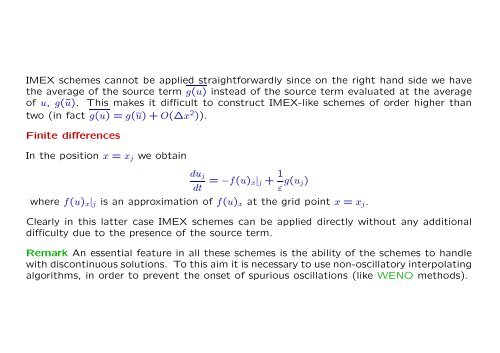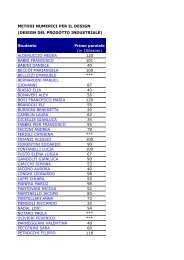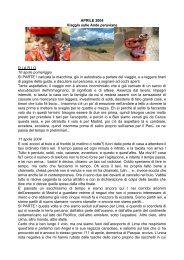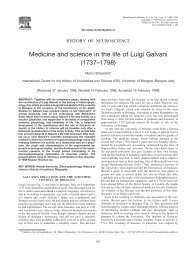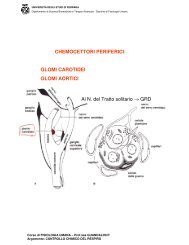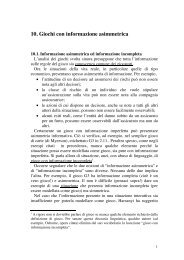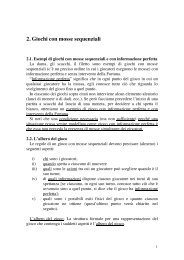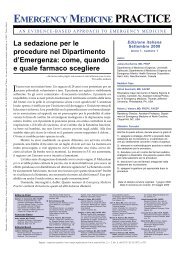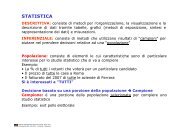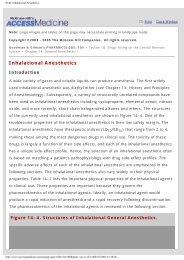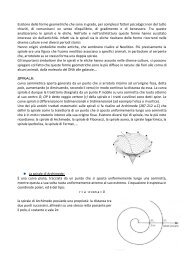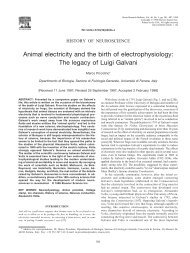Implicit-Explicit Runge-Kutta schemes for hyperbolic systems ... - utenti
Implicit-Explicit Runge-Kutta schemes for hyperbolic systems ... - utenti
Implicit-Explicit Runge-Kutta schemes for hyperbolic systems ... - utenti
Create successful ePaper yourself
Turn your PDF publications into a flip-book with our unique Google optimized e-Paper software.
IMEX <strong>schemes</strong> cannot be applied straight<strong>for</strong>wardly since on the right hand side we have<br />
the average of the source term g(u) instead of the source term evaluated at the average<br />
of u, g(ū). This makes it difficult to construct IMEX-like <strong>schemes</strong> of order higher than<br />
two (in fact g(u) = g(u) + O(∆x 2 )).<br />
Finite differences<br />
In the position x = xj we obtain<br />
duj<br />
dt = −f(u)x|j + 1<br />
ε g(uj)<br />
where f(u)x|j is an approximation of f(u)x at the grid point x = xj.<br />
Clearly in this latter case IMEX <strong>schemes</strong> can be applied directly without any additional<br />
difficulty due to the presence of the source term.<br />
Remark An essential feature in all these <strong>schemes</strong> is the ability of the <strong>schemes</strong> to handle<br />
with discontinuous solutions. To this aim it is necessary to use non-oscillatory interpolating<br />
algorithms, in order to prevent the onset of spurious oscillations (like WENO methods).


